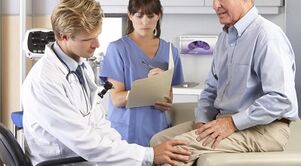
Arthrosis of the knee joint is also called gonarthrosis or deformed osteoarthritis. The disease can lead to serious consequences, including disability. At the first signs of gonarthrosis, you should see a doctor for diagnosis and treatment. Therapy must be completed in compliance with other conditions and prescriptions.
Common features of this disease
Gonarthrosis is a progressive lesion of the cartilage that covers the articular surface. As a result of these changes, joint function is impaired, and pain appears.
Having osteoarthritis is chronic. In most cases, the disease progresses slowly, but certain factors can accelerate its development. This is mainly related to the individual characteristics of the body, the activity and physical activity of the patient, the corresponding pathology.
Two concepts are often confused - arthritis and arthrosis. This pathology is similar in certain characteristics, but different in nature of this course. Only a specialist can make an accurate diagnosis and prescribe appropriate treatment.
With gonarthrosis, the feeding mechanism of cartilage is disrupted, so that its function is gradually disrupted. Among multiple localized arthrosis, pathology of the knee joint occurs in every third patient.
The main cause of arthrosis of the knee joint
This is the most common form of the disease. Older women are at risk for primary pathology, especially if they are overweight - obesity 2 or 3 degrees.
There is an opinion that primary gonarthrosis is associated with average life expectancy. Compared to centuries ago, it has increased significantly, and the joints only get tired over time.
Gonarthrosis associated with natural aging is considered normal. If the articular cartilage is destroyed earlier or the process is too intense, then this condition is considered pathological.
Causes of secondary arthrosis of the knee joint
Secondary gonarthrosis can be triggered by the following factors:
- genetic predisposition, provided it can be clearly detected;
- broken leg;
- dislocation of the knee joint;
- meniscus injury;
- congenital dysplasia of the knee joint;
- extreme physical activity (especially for athletes);
- constant static load;
- rheumatism;
- rheumatoid arthritis (not to be confused with rheumatism);
- ankylosing spondylitis;
- congenital deformity of the lower leg - valgus or varus;
- congenital shortening of one limb;
- metabolic syndrome;
- gout;
- akomegali;
- osteomyelitis;
- chondrocalcinosis;
- pathology associated with material exchange;
- articular hypermobility - the ligament apparatus is indeed weak;
- hemokromatosis;
- diabetes mellitus;
- pathology of the endocrine system.
There are many possible causes of deformed osteoarthritis, so this pathology is called polyetiological. It is often not possible to identify the true cause of the disease, therefore, a diagnosis of primary (idiopathic gonarthrosis) is made.
Symptoms of gonarthrosis
In addition to pain (the main symptom), the pathology may be accompanied by the following symptoms:
- Crunch and click.These symptoms usually appear during movement and are often ignored by patients. Cramps in the knee may mean grooves, osteophytes, ulcers have appeared on the articular surface.
- Controlled movement.These symptoms are very important during diagnosis, as it is possible to distinguish gonarthrosis from a number of other pathologies affecting the musculoskeletal system. Movement is usually stiff in the morning. When a person starts walking, these symptoms disappear within half an hour. If the stiffness persists for an hour or longer, this may indicate an inflammatory process or other pathology.
- Reduces range of motion.These symptoms indicate that the patient is unable to bend the knee completely. This is due to the pain syndrome, softening the intensity of a person trying to move his legs less. Over time, this leads to shortening of the ligaments, called contractions.
- Bad joints.Gonarthrosis can cause blockage of joints in certain positions, and it is impossible to replace them due to severe pain. This is usually due to changes in the articular surface, when the internal ligaments of the knee are pulled, protruding from the pineal gland. In this case, only an inverted ligament displacement can help. Less commonly, the cause of joint disorders is the entry of foreign bodies into the joint space. The cause of the problem can be part of the meniscus or fracture of the osteophyte.
Classification of diseases
Each level has a special feature:
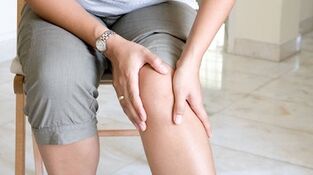
- The first stageis the beginning, it is also called simple. The first pathological signs are considered to be its onset, and the transition to the next stage is characterized by the appearance of bone deformity. They can be detected by visual or X-ray examination. In the first stage of the disease, the accumulation of fluid in the joints has already begun - this phenomenon is called synovitis. He is the one who causes pain, which so far only appears when moving. Their intensity can vary.
- In the second (moderate) stagegonarthrosis, pathological changes can be seen even visually. They are indicated by an increase in knee size, deformation. On x-rays, you can see that the bone tissue at the edges of the joint has grown, and the joint space has narrowed. It is at this stage that the pain syndrome manifests itself from the slightest load, and when walking or squatting, the knees begin to crack.
- Third stage (severe)Defective osteoarthritis is diagnosed when there is almost no cartilage tissue in the joint. If the pathology is difficult, then the bones can grow together, which will cause complete movement of the affected limb.
The exact stage of gonarthrosis is determined by the specialist. In this case, you need to focus not on the symptoms of the disease, but on the X-rays received. Pathology does not always follow standard patterns.
Diagnostics
Only instrumental diagnostics will help determine a defective osteoarthritis:
- x-ray;
- ultrasound scanning;
- tomography - magnetic or magnetic resonance imaging;
- arthroscopy;
- thermography;
- skintigraphy.
Often one X-ray is enough to detect gonarthrosis. It is done in two projections. If only one knee is affected, a picture of a healthy limb is still taken to compare the results.
Which doctor should I get help from?
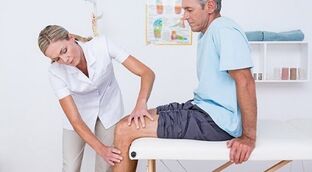
In the case of deformant osteoarthritis, different specialists may be involved. In conventional clinics, they usually see a surgeon.
Arthrologists, rheumatologists, orthopedists usually deal with gonarthrosis. In addition, the participation of a chiropractor, arthroscopist may be required. A physiotherapist, physical therapy instructor, a qualified field therapist is usually involved in the treatment process.
Treatment of gonarthrosis
Therapy for knee joint arthrosis takes a long time. In most cases, outpatient treatment is adequate. This implies various steps. The treatment is based on drug therapy, physiotherapy and physiotherapy training. In some cases, surgery is required. With gonarthrosis, it is also permissible to use folk recipes, but it must be combined with traditional medicine.
Drug therapy
The use of various medications is a key component of treatment for gonarthrosis. With such a disease, an integrated approach is needed, which implies the possibility of using the following drugs:
- Nonsteroidal anti-inflammatory drugs.This medicine is produced in various forms, but for osteoarthritis, oral tablets, injection solutions, external products in the form of creams, ointments, gels are preferred. Non-steroidal anti-inflammatory drugs not only fight inflammation, but also reduce pain.
- Corticosteroids.Such drugs are usually used when the disease is severe, or non-steroidal anti-inflammatory drugs are ineffective. Usually it is used as an injection, injecting the drug into the joint capsule. Corticosteroids are used as symptomatic therapy to relieve inflammation and severe pain.
- Analgesics.When prescribing these medications, the severity of the pain syndrome is taken into account. If the pain syndrome is high intensity, then they use strong opium.
- Chondroprotectors.Thanks to these drugs, cartilage tissue is saturated with nutrients that stimulate cell growth. The effect of chondroprotectors manifests itself over a long period of time, so it is used for a long course of therapy. Such drugs are suitable for pathology of 1 or 2 degrees.
- Antispasmodic and muscle relaxer.Such medications are needed when the pathology is accompanied by muscle spasms.
- Vasodilator medication.Such drugs increase blood flow, relieving spasms of small ducts. The combination of vasodilation drugs and chondroprotectors is effective, as the cartilage tissue in this case is better saturated with nutrients.
- Warming ointmentto improve blood circulation. Such funds are appropriate in the absence of synovitis.
The medicine is prescribed by a doctor. Only he can determine what medication is needed in each particular case, according to what scheme to take and how long the course of therapy for each medication is prescribed.
Physiotherapy
In osteoarthritis deformity, various physiotherapeutic methods are actively used. They are used for a variety of purposes: to reduce pain, relieve inflammation, activate blood supply, and speed recovery.
The following physiotherapy methods are effective for knee arthrosis:
- Phonophoresis.This technique is ultrasound therapy combined with drug effects. Due to the high frequency vibrations, the knee joint tissue is heated, which ensures the penetration of the drug into it.
- Shock wave therapy.Procedures using special tools that produce radial acoustic waves. Under their action, the blood supply in the periarticular area is activated, which stimulates the restoration of cartilage and bone structure.
- Ozone therapy.This procedure involves the use of active oxygen. It has analgesic and anti-inflammatory effects on tissues.
- Electromioostimulation.This technique is often used during recovery, as well as in the presence of contraindications to physical exercise. Under the influence of electrical impulses, muscle tone increases and blood circulation improves.
- Diathermy.This technique refers to electrotherapy and involves the use of high-frequency high-frequency current for deep heating.
- Cryotherapy.This technique is also called cold treatment. The affected skin area is exposed to low temperatures for a short period of time. This method restores metabolic processes, improves blood circulation, reduces the severity of inflammation, relieves pain, relieves muscle spasms.
- Hirudotherapy.This technique is considered an alternative. Leeches are placed around the affected joint. The procedure relieves pain, relieves swelling, and stimulates regrowth.
- Laser therapy.This technique is usually used in the early stages of pathology. It has anti-inflammatory, analgesic and stimulating effects.
- Plasma therapy.This procedure is also called joint plasmolifting. It involves intra-articular injection. For them, the patient's blood plasma is used, which is saturated with platelets. This procedure relieves inflammation, induces regrowth of cartilage tissue.
- Healing bath- turpentine, radon, hydrogen sulfide.
- Acupuncture.Such procedures are usually performed at an early stage of the pathology. This technique relieves swelling, relieves pain, and allows you to restore joint mobility.
exercise therapy
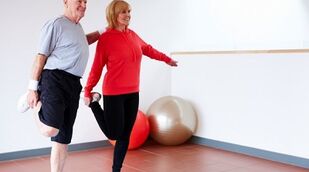
Physiotherapy is required for gonarthrosis. Various trainings must be supervised by qualified professionals. The main goal of exercise therapy is to restore joint mobility and achieve certain movements. It is also necessary to increase muscle strength and endurance.
Exercise therapy is not used during periods of deteriorating disease. At this time, the joints require maximum rest and relief. Locomotor activity is allowed when inflammation and pain have been relieved, from now on at least 5 days have passed.
Exercise therapy programs should be developed individually for each patient. It is necessary to consider the uniqueness of the course of the disease, its severity, the individual characteristics of the patient.
Gymnastics
At home, patients with gonarthrosis can freely do some exercises. You need to do it in stages - first you need to warm up, then do strength training and finish with stretching.
Heating is done as follows:
- Place your feet shoulder-width apart, and lower your arms along your body or lean on the back of your chair. Slowly climb on your toes, linger at the extreme point for 3 seconds, then transfer the weight to the heel smoothly, lifting the toes as high as possible. Perform 10 repetitions without making sudden movements.
- Startup position remains the same. It is necessary to raise the bent leg at the knee to waist level, then lower it. Perform 15 repetitions alternately on each leg. Movement should be slow and smooth.
- Lie on your back, lift your knees bent and simulate bicycle pedal rotation. You have to turn for half a minute in one direction, then in the other. Move slowly.
- Place your feet shoulder-width apart, straighten your back and bend your elbows. Simulate running in place, alternately shifting weight from one foot to the other. Movement should be done on the toes, not leaning on the heel. Exercise for about 5 minutes.
Surgery
Defective osteoarthritis may require surgical treatment. They use the following options:
- Puncture.This intervention is minimally invasive. They use it not only to study intra-articular fluid, but also to eliminate its excess. As a result of such manipulation, inflammation is reduced, and joint mobility is restored, but sometimes only partially.
- Arthroscopy.This procedure can be performed as an independent operation or as one of its stages. This technique is endoscopic and does not require articular cavity surgery. For operation, special thin and flexible instruments are used, and all manipulations are handled using a micro video camera. If arthroscopy is used as an independent operation, then the articular surface is cleaned of fragments of affected cartilage tissue.
- Periarticular osteotomy.Surgery like this is a bit traumatic. It is used to redistribute the load on the knee, so that the pain syndrome is reduced and the joints become more mobile. During surgery, the bones, involved in the formation of the knee joint, are sawed and then fitted to different positions. Such surgical interventions are suitable for grade 1 or 2 deformed osteoarthritis.
- Endoprosthetics.Such an operation is performed when the third stage of gonarthrosis is diagnosed. During surgery, the knee joint is replaced with a biocompatible construction. It is necessary to restore the previous movement and the normal quality of life of the patient. Endoprosthetics is a relatively complex operation and therefore requires a long recovery time.
Diet and General Recommendations
Although pathology affects the knee joint, its treatment shows adherence to diet. It must adhere to the following principles:
- If necessary, normalize weight. BMI should not be more than 20. Weight loss should be gradual - 2-3 kg per month.
- Reduces animal carbohydrates and fats.
- Most of the fat you eat must come from plants.
- You should eat fish at least 1-2 times a week.
- You should eat in fractions. The portion should be small, but should be 5-6 times a day.
- Finish each dish with vegetables or fruit.
- For cooking, you should choose cooking, including steaming, cooking, grilling.
- Observe the drinking rules. The average person needs 2 liters of fluid per day, and most of it must be clean water without gas.
- Drink water before meals. One glass is enough half an hour before a meal.
- Reduce salt intake.
- Avoid alcoholic, carbonated and sugary drinks.
- Beef, pork, semi-finished products, hot peppers, white cabbage, sour fruits should be excluded from the diet.
- It is useful to eat jelly meat, jelly on gelatin, cheese, cottage cheese, chicken, beans.
Traditional medicine
In the treatment of deforman osteoarthritis, unconventional methods are also appropriate. In this case, you should consult a specialist, because the use of natural remedies has contraindications.
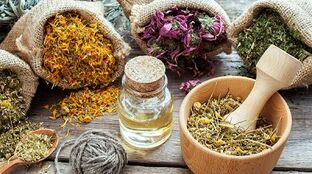
Use the following folk recipes effectively:
- Lubricate the back of burdock leaves with honey, apply to the affected area, fix with cellophane and wrap. Keep compresses for up to 4 hours.
- You can use cabbage leaves instead of burdock. You can knead by hand or poke it in several places. Honey is an option.
- For indoor use, you can use burdock root color. The raw material must be finely chopped, steamed with boiling water and insist. Drink one tablespoon 5 times a day.
- Rinse the potatoes, place in a glass container and cover with alcohol. Stand in the dark for 3 weeks, strain and apply three times a day to rub the affected area.
- Heat the honey in a water bath to a liquid state and rub it on the affected knee, massaging it. Cover the treated area with gauze or bandage and insulation. The procedure is repeated daily for one and a half weeks.
- Steam 5 tbsp. l. wheat rolls and cook for 5-8 minutes over low heat. Wrap the cooled mixture with a natural cloth, apply to the affected area and fix with polyethylene. Each time you need to prepare a fresh mixture.
- Mix iodine with honey and glycerin, leave for 3 hours. Dip a cotton swab into the resulting composition and process the knee and adjacent areas with movement from the bottom up.
- Cut the garlic head and add a glass of vegetable oil. Insist for a week in the dark, strain and apply to the affected area before bed.
- Grind white school lime and mix with yogurt or sour cream to make a thick slurry. Wrap with natural cloth and make a compress for 2. 5 hours, insulating it with polyethylene. Repeat the procedure daily.
- Boil two large onions with husks in one liter of distilled water, drain. Drink the resulting infusion three times a day before meals.
Treatment of gonarthrosis should not be limited to traditional medicine. The disease requires an integrated approach, which necessarily involves drug therapy and exercise.
Prognosis, possible complications
The general prognosis of osteoarthritis is poor due to the progressive nature of the disease. The process of tissue degradation and joint deformity is irreversible, but can be stopped or significantly slowed down.
The following factors affect the prognosis of gonarthrosis:
- Age of the patient.The younger he gets, the less prognosis he has. The pathological process develops gradually, therefore, with joint damage in young people, the disease can reach its final stage in old age and cause various complications.
- Types of arthrosis.In primary pathology, only the joint is affected, and the disease usually progresses slowly. With secondary disease, there are other disorders that can speed up this process or cause complications.
- Obey the doctor's instructions.This is related to taking the necessary medication, undergoing physiotherapy procedures, exercise therapy, ensuring joint dislocation. It is also important to keep track of the duration of drug therapy, as most medications need to be taken periodically in certain courses.
- Body mass.If the patient is overweight, then the joints experience increased stress, which negatively affects the course of the disease.
- Profession.This factor is very important for the prognosis of the disease. Professional athletes, people who experience regular or constant pressure on the legs, always suffer. Inactive work, when the joint is in one position for a long time, can also have a negative impact on the course of the disease.
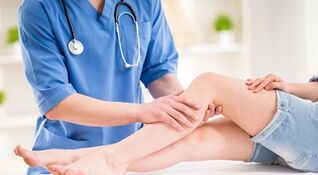
Defective osteoarthritis runs slowly, but without proper treatment, it can cause a number of complications:
- Joint defects.This occurs in the final stages of the disease. The foot can bend at an improper angle, which is not only aesthetically unpleasant, but can also lead to complete loss of joint function.
- Infection.Microtrauma, for example, cracks in cartilage tissue, can cause such complications. Pathogens can enter the joint along with current or lymph from the focus of infection. Surgical intervention - arthroscopy, diagnostic puncture can also be the cause of infection. The introduction of an infection in the joint can lead to aseptic necrosis.
- Dislocation, fracture.Such complications occur against the background of a violation of the function of the knee joint, where the load is not distributed properly, and the excess can cause injury.
- Ankylosis.In this case, the bones at the site of the missing joint grow together. This is one of the most serious disorders, because due to the fixation of the lower leg in one position, the motor function is lost.
In most cases, complications arise as a result of the patient's mistake, ignoring his illness or ignoring a doctor's order.
Prevention
To prevent knee arthrosis, several precautions should be taken:
- maintain a normal weight;
- avoid heavy loads and strong pressure on the knees;
- ensure regular and adequate physical activity;
- avoid injuries to joints;
- if an injury is received, then timely, competent and complete treatment is required;
- Strengthens the periarticular muscles.
Secondary precautions should also be highlighted. They are needed when gonarthrosis has been diagnosed and is necessary to reduce its rate of development. In this case, you need to take the following steps:
- to use the chondroprotectors course every six months or a year;
- treats arthritis on time, quickly and effectively.
Arthrosis of the knee joint is a serious pathology that has a poor prognosis and can cause a number of complications. It is necessary to begin treatment as early as possible to slow down the pathological process. Therapy should be comprehensive, some techniques should be part of the lifestyle: diet, exercise, taking certain medications.



































